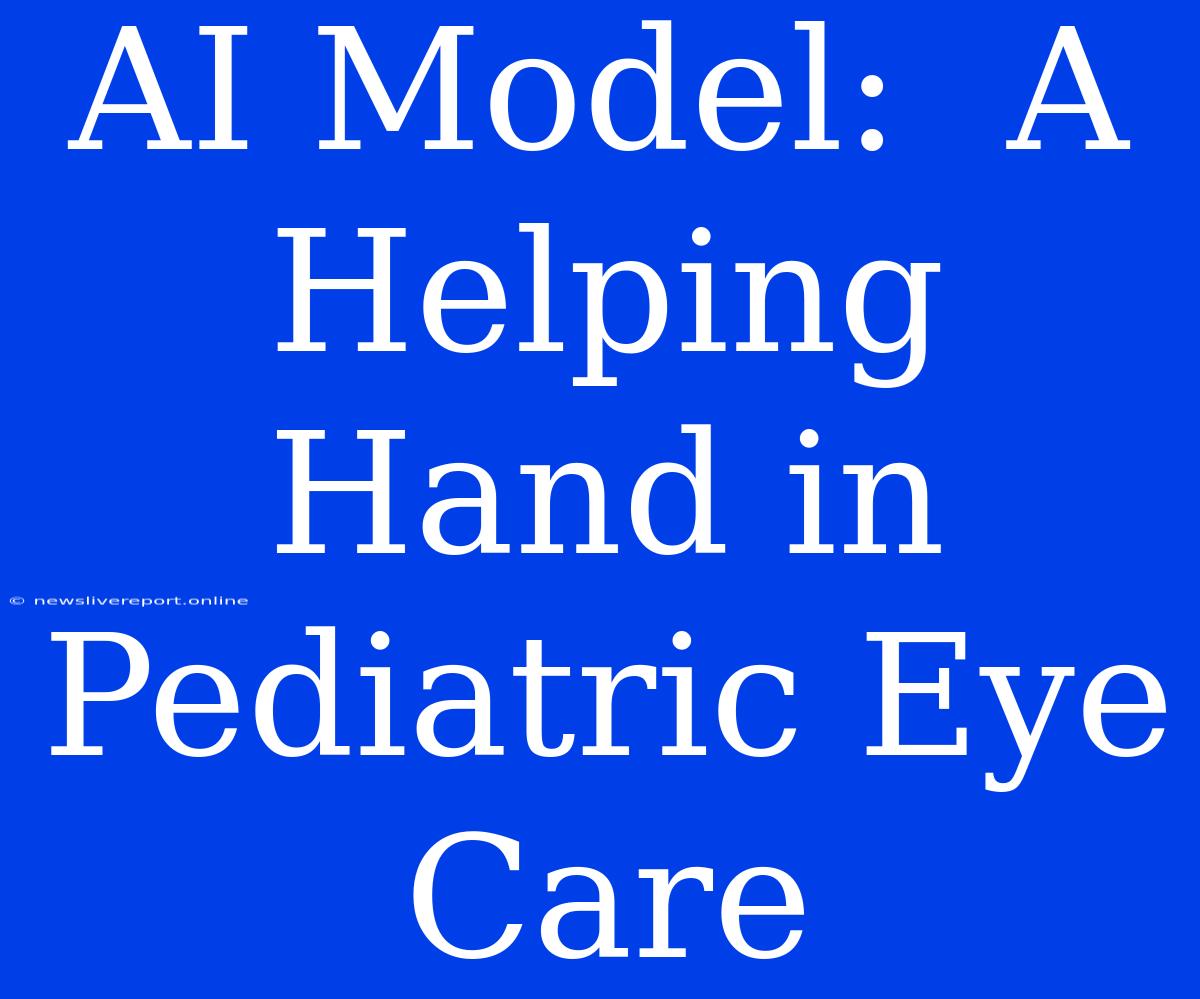AI Model: A Helping Hand in Pediatric Eye Care
The field of pediatric eye care is constantly evolving, with new technologies emerging to improve diagnosis, treatment, and overall patient experience. One such innovation is the use of Artificial Intelligence (AI) models, which are proving to be a valuable asset in assisting ophthalmologists and optometrists in providing comprehensive and effective care for young patients.
AI in Pediatric Eye Care: A Game Changer
AI models are revolutionizing pediatric eye care in several key ways:
1. Enhanced Diagnosis and Screening:
- Early Detection of Eye Conditions: AI algorithms can analyze images of the eye, such as fundus photographs and OCT scans, to detect subtle signs of eye diseases like retinopathy of prematurity (ROP), amblyopia, and glaucoma, even in their early stages. This allows for timely intervention and potentially prevents vision loss.
- Automated Vision Screening: AI-powered tools can streamline vision screening processes, identifying children at risk for vision problems without requiring extensive manual testing. This can significantly improve the efficiency and effectiveness of large-scale vision screening programs.
2. Improved Patient Engagement and Education:
- Interactive Learning Tools: AI chatbots and virtual assistants can provide personalized information to patients and parents about eye conditions, treatment options, and post-operative care. These tools can answer common questions, alleviate anxiety, and empower patients to actively participate in their care.
- Virtual Reality (VR) Applications: VR simulations can create immersive experiences that educate children about eye health, demonstrate procedures, and encourage compliance with treatment plans.
3. Personalized Treatment Plans:
- Tailored Treatment Recommendations: AI models can analyze patient data, including medical history, demographics, and visual acuity, to generate personalized treatment recommendations. This can help ophthalmologists develop more effective and efficient treatment plans, considering individual patient needs.
- Predictive Modeling: AI models can be used to predict the progression of eye diseases and the likelihood of treatment success. This can help clinicians make informed decisions about treatment strategies and adjust care plans as needed.
The Future of AI in Pediatric Eye Care:
The use of AI in pediatric eye care is still in its early stages, but the potential benefits are immense. As AI technology continues to develop, we can expect to see even more innovative applications emerge, including:
- Automated Diagnostic Systems: More sophisticated AI models capable of making independent diagnoses, potentially replacing the need for manual interpretations.
- Real-time Telemedicine: AI-powered telemedicine platforms could facilitate remote consultations and monitoring of children with eye conditions, improving access to care in underserved areas.
- Personalized Eye Care Apps: Mobile apps that utilize AI to track patient progress, provide personalized reminders, and facilitate communication between patients, parents, and healthcare providers.
While AI offers tremendous potential, it is important to note that human expertise remains essential. AI models serve as powerful tools to support ophthalmologists and optometrists in making informed decisions and providing optimal care. However, ethical considerations and the responsible use of AI technology are crucial to ensure patient safety and promote the well-being of children.
The future of pediatric eye care is bright, with AI poised to play a significant role in improving the lives of children with vision problems. By embracing this transformative technology, we can empower ophthalmologists and optometrists to provide the best possible care for our youngest patients.

